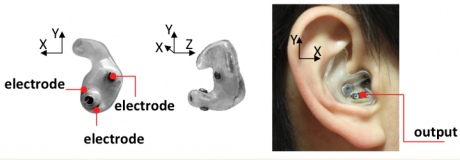Inventor's Corner: Capturing brain waves
by Kailey Nolan

Kailey Nolan of Imperial Innovations speaks to Professor Danilo Mandic about his work developing a discreet, wearable device to measure brain waves.
Professor Danilo Mandic from the Communications and Signal Processing Group (Electrical and Electronic Engineering) is developing a discreet, wearable device that can measure the brain’s electrical activity using a method known as electroencephalography (EEG). At present EEG is largely restricted to controlled environments in the laboratory or clinic, but Danilo’s device could allow non-invasive EEG recordings in normal surroundings like the home.
What are the benefits of EEG?

Example of an existing EEG device used in epilepsy
Traditionally, EEG has been used as a diagnostic tool for detecting brain disorders like epilepsy, but this is now expanding to include a range of potential applications, such as the monitoring of fatigue and stress, and as a means of enabling patients with ‘locked-in syndrome’ to communicate using their thoughts — using a brain-computer interface (BCI). However, this wider role for EEG is limited by the bulky and costly nature of most recording systems.
Why is this device different?
We’re trying to create an unobtrusive, fully wearable system in which the electrodes are embedded on a customised earpiece, using existing hearing aid technology. This improves user comfort and facilitates EEG recordings in natural environments using wireless technology. In fact, the device will allow for continuous 24-hour monitoring over a period of days, enabling us to analyse sleep and stress-related disorders. It could be particularly useful for fragile populations, such as the elderly, to detect seizures or help in stoke rehabilitation.

An early prototype of Danilo's device
How are you developing this technology?
The next step is to better understand the neurophysiology of how EEG signals are propagated from the brain to the ear canal, and work towards a more advanced prototype. I am collaborating with Professor Mary Morrell (NHLI) to establish the extent to which these devices can be used for sleep monitoring, supported by a Biomedical Research Unit Pump Priming Award. Also we have received the departmental Eric Laithwaithe award and were recently shortlisted for the annual BCI Award in 2012.
For help in finding an alternative commercial application for your research contact: info@imperialinnovations.co.uk
Article text (excluding photos or graphics) © Imperial College London.
Photos and graphics subject to third party copyright used with permission or © Imperial College London.
Reporter
Kailey Nolan
Imperial Innovations